Middle School Programs
Remember, although the programs are designed for specific grade levels, they can be modified to accommodate students of any age.
Program lengths can also be modified to fit class times as needed.
Make your reservation by calling 336.758.5282, emailing lammuseum@wfu.edu, or start the process by completing this form.
You can navigate by clicking the buttons below or by scrolling.
Sixth Grade
Historical Skills Workshop (Unit 1)
The four fields of anthropology (cultural, biological, linguistic, and archaeology) contribute to our understanding of people, cultures, and civilizations. Through discussion, images, hands-on artifacts, and activities students will learn about the focus of each field, how anthropologists study artifacts and make observations, and how conclusions are made through the scientific method. Students will discover how anthropological methods can be used to enhance their knowledge of the past and the present. This program is designed as an introduction to the four fields of anthropology but can have a focus on an individual field. This program can be enhanced by visiting the exhibit Stories of Humanity: Anthropology in North Carolina.
Time required: 1 to 1.5 hours
Standards: 6.H.1.3, 6.I.1.3, 6.I.1.4, 6.I.1.5
Ancient World Civilizations (Units 1-10)
The ancient world was filled with rich, powerful, and important kingdoms. These empires created art, architecture, inventions, writing and math systems, effective governments, and trade routes still being used today. Our programs will focus on the importance and lasting impacts of civilizations from Asia, Africa, the Americas, and Pacific Islands/Oceania.
Time required: 1.5 hours
Standards: 6.B.1.1, 6.B.1.2, 6.B.1.3, 6.C&G.1.1, 6.C&G.1.2, 6.C&G.1.3, 6.C&G.1.4, 6.C&G.1.5, 6.C&G.1.6, 6.E.1.1, 6.E.1.2, 6.G.1.1, 6.G.1.2, 6.G.1.3, 6.G.1.4, 6.H.1.1, 6.H.1.2, 6.H.1.3
Choose one of the following cultures. Programs with two or more cultures will be modified for time.
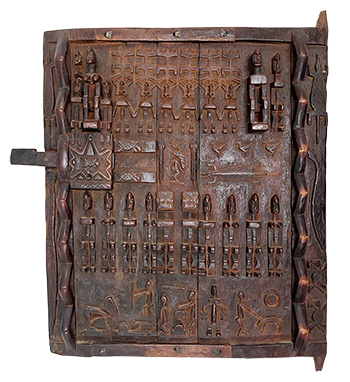
Africa
Africa is a vast continent with a long history. Through discussion, images, hands-on artifacts, and activities, students will look at the migration of people, explore some of its ancient kingdoms and religions, and discover how ancient achievements and inventions still impact life today. Choose one of the following:
- Egypt Using discussion, images, hands-on artifacts, and activities student will discover why Egypt was one of the most influential civilizations in the world and its lasting impact.
- Bantu Through discussion, images, hands-on artifacts, and activities students will explore who the Bantu were and the importance of their migration on agriculture, language, and life in Africa.
- Aksum/Ethiopian Highlands Using images, hands-on artifacts, and activities students will learn why the city of Aksum and the Ethiopian Highlands became centers of Christianity and trade.
- Bedouin Students will discover who the Bedouin are and how their history has made a lasting impact through images, hands-on artifacts, and activities.
- Songhai* Students will learn about the importance of the Songhai Empire as a center of trade, education, and religion through images, hands-on artifacts, and activities.
- Ghana* Through images, discussion, hands-on artifacts, and activities students will learn about the rise and fall of the kingdom of Ghana.
- Mali* Using images, hands-on artifacts, and activities students will explore the wealth, trading power, and rule of Mansa Musa in the kingdom of Mali.
*These three programs can be combined into one program on the West African kingdoms.

Asia
Asia is home to many diverse cultures with ancient roots. Through discussion, images, hands-on artifacts, and activities, students will explore some of those kingdoms, people, and religions to discover why ancient achievements and inventions still impact life today. Choose one of the following:
- China China has one of the oldest civilizations in the world. Through discussion, images, hands-on artifacts, and activities, students will learn about Buddhism, Confucianism, the Silk Road, Qin dynasty, silk production, and other lasting Chinese achievements.
- Mongols Led by Genghis Khan, Mongols created the largest land empire in the world. Using images, hands-on artifacts, and activities students will discuss the religious tolerance, spread of innovations, and military strategies that made the Mongols so powerful.
- Japan For a very long time Japan was an isolated kingdom. Students will explore the geography, Shintoism, and feudal system of ancient Japan using images, hands-on artifacts, activities, and discussion.
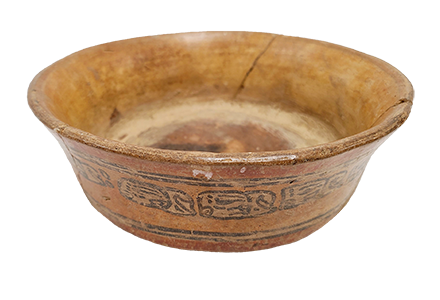
Americas
The Americas were home to several ancient civilizations. Using images, hands-on artifacts, activities, and discussion, students will learn about the religions, achievements, arts, governments, rise and decline, and lasting influence of the Maya and Inca empires. Choose one of the following:
- Maya* Students will explore the rise, theories of decline, eventual conquest, and lasting effects of the Maya civilization through, images, discussion, hands-on artifacts, and activities.
- Inca* Using discussion, images, hands-on artifacts, and activities students will learn about the government, architecture, and inventions of the Inca empire.
*A single program combining the Maya, Inca, and Aztec is also available.
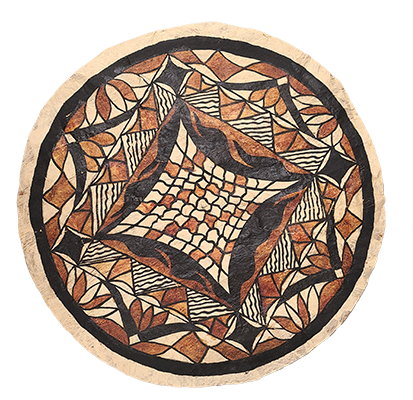
Pacific Islands/Oceania
The Pacific Ocean is the largest in the world, extending from the Arctic Ocean to the Southern Ocean and is bound by the continents of Asia, Oceania, the Americas, and is filled with thousands of islands. Through images, hands-on artifacts, activities, and discussion students will discover the indigenous peoples of this area had and still have independent languages, religions, arts, cultures, and traditions. Choose one of the following:
- Polynesia Using discussion, images, hands-on artifacts, and activities students compare the cultures and traditions of New Zealand, Tonga, and other Polynesian countries.
- Aboriginal Australia Students will be introduced to the arts, languages, cultures, and traditions of the Aboriginal Peoples of Australia through discussion, images, hands-on artifacts, and activities.
Belief Systems (Unit 5)

The diversity of religious faiths, traditions, and rituals of people around the world is a main component of what defines cultures and civilizations. Through discussion, activities, images, and hands-on artifacts, students will explore the beliefs, practices, and spread of some of the world’s major and lesser-known religions. This program is designed as an introduction to Christianity, Islam, Judaism, Buddhism, and Hinduism, but a more in-depth program can be requested on individual religions. Other religions available upon request.
Time required: 1.5 hours
Standards: 6.B.1.1, 6.B.1.2, 6.H.1.2
- Buddhism Through images, hands-on artifacts, video clips, and activities students will discover who Buddha was, what different images of him mean, and the teachings of Buddhism.
- Christianity Students will learn about the rise, spread, and diversity of Christianity through discussion, images, hands-on artifacts, and activities.
- Hinduism Discussion, images, hands-on artifacts, and activities will introduce students to the history, practices, denominations, and the pantheon of gods and goddesses of Hinduism.
- Islam Using images, hands-on artifacts, video clips, and activities students will learn about the importance of historical figures in Islam such as Mansa Musa, the various sects, and the Five Pillars of Islam.
- Judaism Through discussion, images, hands-on artifacts, and activities students will learn about the many sects, clothing, and teachings of Judaism and discover the difference between being of Jewish ancestry and practicing the Jewish religion.
Trade Routes (Unit 7)
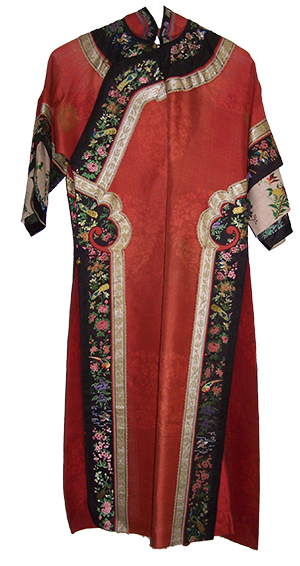
In ancient times, extensive land and sea trading routes were used to move goods, music, languages, ideas, innovations, foods, and religions throughout the world. Using images, hands-on artifacts, activities, and discussion students will discover how trade created environmental, cultural, and political changes that still impact the world today.
Time required: 1.5 hours
Standards: 6.C&G.1.5, 6.E.1.1, 6.G.1.2, 6.G.1.3, 6.H.1.2
Choose one of the following. Multiple trade routes can be combined into one program.
- Silk Roads Students will explore the various segments of the Silk Road trade routes from China to Europe through images, hands-on artifacts, activities, and discussion.
- Sub-Saharan Trade Routes Using images, discussion, hands-on artifacts, and activities students will learn about the hardships and rewards of the Sub-Saharan trade routes.
- Mesoamerican Trade Routes Through discussion, images, hands-on artifacts, and activities students will discover the importance of the Mesoamerican trade routes.
Seventh Grade
Social Studies 101 (Unit 1)
The four fields of anthropology (cultural, biological, linguistic, and archaeology) contribute to our understanding of people, cultures, and civilizations. Through discussion, images, hands-on artifacts, and activities students will learn about the focus of each field, how anthropologists study artifacts and make observations, and how conclusions are made through the scientific method. Students will discover how anthropological methods can be used to enhance their knowledge of the past and the present. This program is designed as an introduction to the four fields of anthropology but can have a focus on an individual field. This program can be enhanced by visiting the exhibit Stories of Humanity: Anthropology in North Carolina.
Time required: 1 to 1.5 hours
Standards: 7.B.1, 7.G.1, 7.H.1
World Religions (Unit 1)
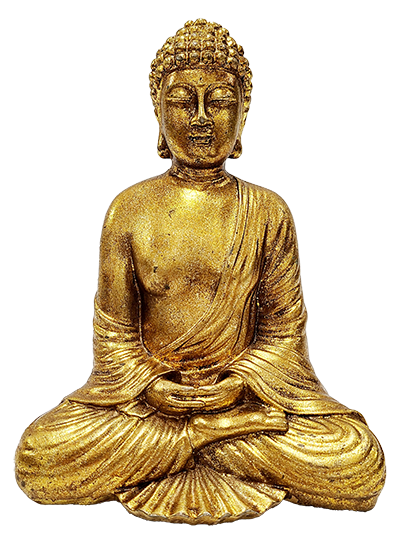
The diversity of religious faiths, traditions, and rituals of people around the world is a main component of what defines cultures and civilizations. Through discussion, activities, images, and hands-on artifacts, students will explore the beliefs, practices, and spread of some of the world’s major and lesser-known religions. This program is designed as an introduction to Christianity, Islam, Judaism, Buddhism, and Hinduism, but a more in-depth program can be requested on individual religions. Other religions available upon request.
Time required: 1.5 hours
Standards: 7.B.1.2
- Buddhism Through images, hands-on artifacts, video clips, and activities students will discover who Buddha was, what different images of him mean, and the teachings of Buddhism.
- Christianity Students will learn about the rise, spread, and diversity of Christianity through discussion, images, hands-on artifacts, and activities.
- Hinduism Discussion, images, hands-on artifacts, and activities will introduce students to the history, practices, denominations, and the pantheon of gods and goddesses of Hinduism.
- Islam Using images, hands-on artifacts, video clips, and activities students will learn about the importance of historical figures in Islam such as Mansa Musa, the various sects, and the Five Pillars of Islam.
- Judaism Through discussion, images, hands-on artifacts, and activities students will learn about the many sects, clothing, and teachings of Judaism and discover the difference between being of Jewish ancestry and practicing the Jewish religion.
Eighth Grade
Indigenous Peoples & North Carolina (Units 1, 3, 4, 5, 6 & 8)

This area we call North Carolina was populated by multiple Indigenous groups before European explorers and settlers arrived. Using images, hands-on artifacts, primary source documents, and activities this program provides an overview of the history of Indigenous peoples in North Carolina from the past through the present. It summarizes early life, European contact, assimilation, segregation, citizenship, laws, and contemporary issues.
Time required: 1.5 hours
Standards: 8.B.1.1, 8.B.1.2, 8.C&G.1.2, 8.C&G.1.3, 8.C&G.1.4, 8.C&G.1.5, 8.C&G.2.2, 8.E.1.2, 8.G.1.1, 8.G.1.2, 8.G.1.3, 8.G.1.4, 8.H.1.1, 8.H.1.3, 8.H.1.4, 8.H.2.3
All Grades
Working in a Museum
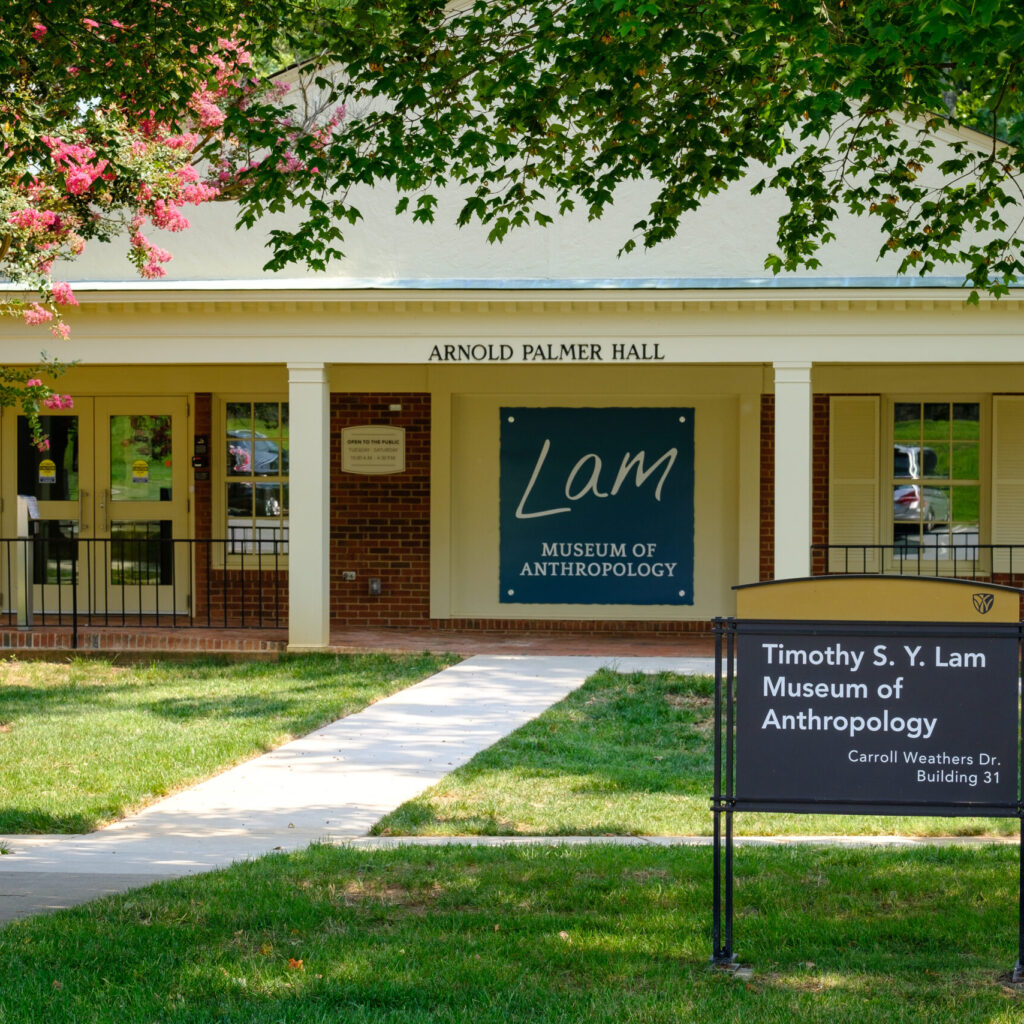
Ever wonder what employees at a museum do? Through discussions with the Lam Museum of Anthropology staff, students will discover the different types of jobs involved in running a museum. This program is only offered in the museum and includes a tour of the classroom, galleries, and collection spaces of the museum.
Time required: 1 to 1.5 hours depending on group size
This program is not available as outreach.
Foreign Language Programs
These programs are designed to expose students to cultures related to their language study and to serve as writing and conversation prompts. Programs are presented in English and can be adapted to any grade level.
Spanish – Día de los Muertos/Day of the Dead
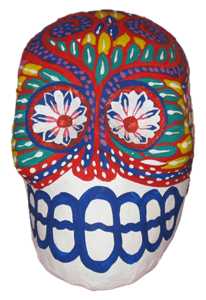
It’s not Mexican Halloween. Celebrating the dead is a tradition with a long history in parts of Mexico and Central America. Using images, hands-on artifacts, activities, and discussion, students will learn about the true meaning of Day of the Dead. This program can be enhanced by visiting the exhibit Life after Death: Celebrating Day of the Dead. A craft project can be included for an additional fee.
Time required: 45 min. to 1.5 hours
Spanish – Ancient American Civilizations

The Americas home to several ancient civilizations. Using images, hands-on artifacts, activities, and discussion, students will learn about the religions, achievements, arts, governments, rise and decline, and lasting influence of the Aztec, Maya, and Inca empires.
Time required: 1.5 hours
Chinese – Chūnjié/Chinese New Year
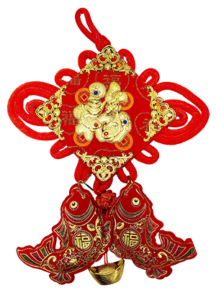
The most important holiday in China is New Year, known as Lunar New Year or Spring Festival. Through discussion, images, hands-on artifacts, and activities, students will discover how people decorate, what they eat, and why Lunar New Year is celebrated at different times each year. A craft project can be added for an additional fee.
Time required: 1 to 1.5 hours
Chinese – Silk Roads
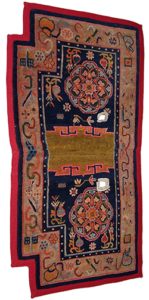
In ancient times, extensive land and sea trading routes were used to move goods, music, languages, ideas, innovations, foods, and religions throughout the world. Students will explore the various segments of the Silk Road trade routes from China to Europe through images, hands-on artifacts, activities, and discussion. They will discover how trade affected environmental, cultural, and political changes that still impact the world today.
Time required: 1.5 hours
Chinese – Ancient China

China has one of the oldest civilizations in the world. Through discussion, images, hands-on artifacts, and activities, students will learn about Buddhism, Confucianism, the Silk Road, Qin dynasty, silk production, and other lasting Chinese achievements.
Time required: 1.5 hours.
Japanese – Kodomo No Hi/Children’s Day
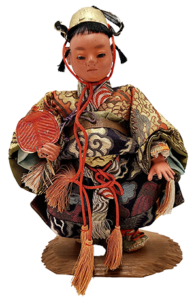
Children’s Day is a special holiday in Japan just for children. Using images, hands-on artifacts, activities, and discussion, students will be introduced to the purpose, foods, kites, and dolls used on this day to celebrate children. A craft project can be added for an additional fee.
Time required: 1 to 1.5 hours
Japanese – Ancient Japan
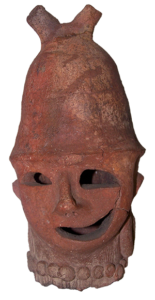
For a very long time Japan was an isolated kingdom. Students will explore the geography, Shintoism, and feudal system of ancient Japan using images, hands-on artifacts, activities, and discussion.
Time required: 1.5 hours

